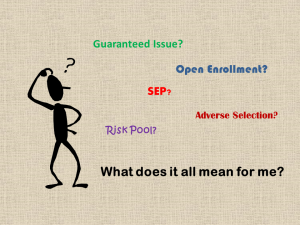As health insurance cancellation letters arrive in mailboxes across the country, anecdotes are circulating about people who are seriously ill and fear they will not have insurance to pay for their medical care after December 31, 2013. Beneficiaries in states whose health insurance marketplaces have been established by the federal government are particularly concerned because the sales website has not worked properly. However, alternative ways exist to enroll in a new health plan and coverage is guaranteed, as long as the policy is purchased within an Open Enrollment period and the premium is paid on time.
Paper Application
Paper applications have been developed for consumers to use for purchasing health insurance through any of the state or federal marketplaces. Download and fill out the application. Send it to the address listed on the application. You will be contacted with information and instructions on how to complete your enrollment in an insurance plan, including what plans are available to you, what they cover, how much tax credit subsidy might be available to help pay for the insurance, and what your cost will be.
Get a paper application right away if you plan to use this method to apply. It will take around two weeks longer than applying on-line. If you absolutely must have insurance in place by January 1, 2014, now is the time to start the process.
Work with an Agent, an Enrollment Counselor, or a Navigator
Certified insurance agents and enrollment counselors/navigators are trained and ready to help consumers get enrolled in health insurance plans.
Certified insurance agents bring specialized training and experience to the table to assist their clients in selecting the plan that will best serve their needs. Since each insurer that offers plans on the individual and family market must offer identical plans and pricing through the marketplace and outside the marketplace, agents will have up-to-date information even if the website is not working well.
Certified enrollment counselors/navigators have also been trained to assist consumers in the enrollment process. These individuals can help answer questions about the application and the process of enrolling. They do not make recommendations regarding which policy might be better suited for an individual or family’s needs. They refer consumers to Certified Insurance Agents when policy selection recommendations are needed.
Enroll On-line, With or Without Help from an Agent
Marketplace websites are improving in reliability and functionality by the day. The federal site, www.healthcare.gov, includes many tools and resources consumers can use to learn about the policies being offered in their county of residence and how much they will cost. The federal site includes links to each state site as well.
For those shopping before beginning the application process, there is a simple-to-use set of questions and drop-down boxes to develop a list of possible plans and their price. Another link takes consumers to the Kaiser Foundation’s calculator that can be used to estimate eligibility for advanced tax credit payments (subsidies) and cost sharing reductions.
Certified Insurance Agents are ready to help consumers enroll on-line. Contact information can be obtained through the marketplace websites. Designate an agent and that person will contact you to answer your questions and help you get enrolled.
It’s a New Day
Prior to the Affordable Care Act, cancellation letters would indeed have spelled disaster for their recipients. Insurers were allowed in many states to cancel coverage in case of high expenses or to set monetary limits on the benefits each beneficiary could receive for medical care. A person dropped from coverage by an insurer could not normally qualify for a policy from another insurer due to a pre-existing condition.
Today, with the coming of the Affordable Care Act (aka, Obamacare), insurance policies all include the same benefits. All legal residents of the country can shop for insurance and enroll in plans through their state or federal marketplace. Those who have been priced out of the market or excluded due to health conditions can once again have health insurance and access to care. Plans even exist that provide minimal coverage at lower prices for those who don’t qualify for subsidies but cannot afford the plans offered on the marketplaces. (These plans require a waiver before they can be purchased by anyone over age 29.)
Consumers can obtain the protection from catastrophic health care costs, paying their “fair share” of the cost of their insurance, while still being able to afford food, shelter, and the other necessities of daily life. All they need to do is enroll by December 15, 2013 and pay their premium by December 26, 2013. Their insurance will be there ready to be used on January 1, 2014.
For Help in Santa Cruz, California
For help enrolling in Santa Cruz County, please contact Kathleen Brewer de Pozos at 831-713-6438. Kathy is a Covered California Certified Insurance Agent and is happy to answer your questions and help you through the process of selecting and enrolling in a plan to meet your needs.
Se habla Español.

